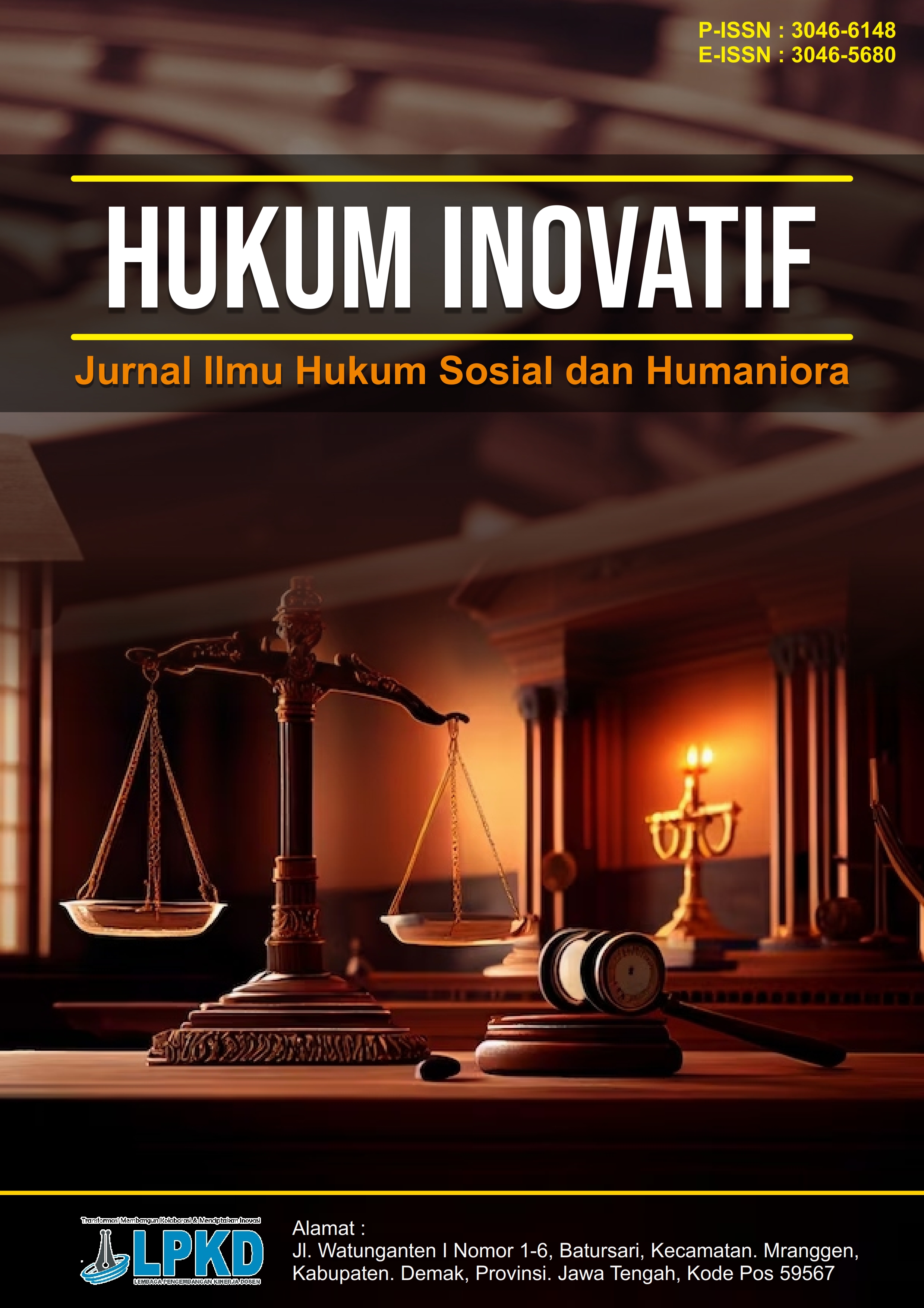Penyalahgunaan Teknologi Deepfake untuk Konten Pornografi Non-Konsesual di Indonesia
DOI:
https://doi.org/10.62383/humif.v2i2.1475Keywords:
Cybercrime, Deepfake, Digital Regulation, Legal Protection, Non-consensual PornographyAbstract
The development of digital technology, particularly deepfake, has brought negative impacts, including the protection against non-consensual pornography content. Deepfake, which uses artificial intelligence to manipulate images, videos, or audio, allows the creation of pornography without the consent of the individual whose face or identity is manipulated. This phenomenon results in violations of privacy, honor, and the psychological well-being of the victims, while also spreading false information that can damage public perception. Although Indonesia has regulations such as Law No. 11 of 2008 on Electronic Information and Transactions (ITE Law) and Law No. 44 of 2008 on Pornography, there are no specific provisions regulating the use of deepfake technology. This article identifies deficiencies in existing regulations and provides recommendations for adaptive legal measures, including legislative updates, strengthening digital platform responsibilities, enhancing law enforcement capacity, and international cooperation to address this threat. It is hoped that with these measures, protection for individuals in the digital era can be strengthened.
References
Amalia, A. R., Raodah, P., & Wardani, N. K. (2024). Menjamin hak perempuan di era digital: Kewajiban negara dan tantangan regulasi nasional. Jurnal Kompilasi Hukum, 9(2), 178–191.
Amelia, Y. F., Kaimuddin, A., & Ashsyarofi, H. L. (2024). Pertanggungjawaban pidana pelaku terhadap korban penyalahgunaan artificial intelligence deepfake menurut hukum positif Indonesia. Dinamika, 30(1), 9675–9691.
Ardiyani, N. K. D. I. (2024). Analisis yuridis pertanggungjawaban pidana pelaku deepfake porn berdasarkan hukum positif. Jurnal Kajian Hukum dan Kebijakan Publik, 2(1), 603–608.
Gandrova, S., & Banke, R. (2023). Penerapan hukum positif Indonesia terhadap kasus kejahatan dunia maya deepfake. Madani: Jurnal Ilmiah Multidisiplin, 1(10).
Novyanti, H., & Astuti, P. (2021). Jerat hukum penyalahgunaan aplikasi deepfake ditinjau dari hukum pidana. Novum: Jurnal Hukum, 31–40.
Putri, Z. A. (2024). Peranan korban perempuan dalam non-consensual dissemination intimate images violence (NCII) di media sosial dilihat dari perspektif viktimologi. Recidive: Jurnal Hukum Pidana dan Penanggulangan Kejahatan, 13(2), 145–154.
Respati, A. A., Setyarini, A. D., Parlagutan, D., Rafli, M., Mahendra, R. S., & Nugroho, A. A. (2024). Analisis hukum terhadap pencegahan kasus deepfake serta perlindungan hukum terhadap korban. Media Hukum Indonesia (MHI), 2(2).
Rohmawati, I., Junaidi, A., & Khaerudin, A. (2024). Urgensi regulasi penyalahgunaan deepfake sebagai perlindungan hukum korban kekerasan berbasis gender online (KBGO). Innovative: Journal of Social Science Research, 4(6), 1779–1794.
Setiawan, A. (2024). Penjatuhan hukuman pidana tambahan pencabutan hak akses internet oleh hakim dalam kasus revenge porn. J-CEKI: Jurnal Cendekia Ilmiah, 3(5), 3103–3110.
Sijabat, S. A. U., & Lukitasari, D. (2024). Konten gambar dan video pornografi deepfake sebagai suatu bentuk tindak pidana pencemaran nama baik. Residif: Jurnal Hukum Pidana dan Penanggulangan Kejahatan, 13(2), 179–194.
Sloan, M. (2020). Penjelasan tentang deepfakes | MIT Sloan. MIT Sloan. https://mitsloan.mit.edu/ideas-made-to-matter/deepfakes-explained
Undang-Undang Republik Indonesia Nomor 1 Tahun 2023 tentang Kitab Undang-Undang Hukum Pidana.
Undang-Undang Republik Indonesia Nomor 11 Tahun 2008 tentang Informasi dan Transaksi Elektronik.
Undang-Undang Republik Indonesia Nomor 44 Tahun 2008 tentang Pornografi.
Utama, A. N., Kesuma, P. T., & Hidayat, R. M. (2023). Analisis hukum terhadap upaya pencegahan kasus deepfake porn dan pendidikan kesadaran publik di lingkungan digital. Jurnal Pendidikan Tambusai, 7(3), 26179–26188.
Downloads
Published
How to Cite
Issue
Section
License
Copyright (c) 2025 Hukum Inovatif : Jurnal Ilmu Hukum Sosial dan Humaniora

This work is licensed under a Creative Commons Attribution-ShareAlike 4.0 International License.






